
The Alpine Charm of Chamonix-Mont Blanc
Experience the majestic beauty and thrilling adventures of Chamonix-Mont Blanc, the ultimate destination for nature lovers and outdoor enthusiasts in the heart of the French Alps.
Chamonix-Mont Blanc, often referred to simply as Chamonix, is a picturesque town nestled in the French Alps. It is renowned for its stunning scenery, with the imposing Mont Blanc, the highest mountain in Western Europe, towering over the town. Visitors are greeted by breathtaking views of snow-capped peaks, verdant valleys, and glistening glaciers that make Chamonix a year-round paradise for nature lovers and adventure seekers alike. In the winter, Chamonix transforms into a haven for skiers and snowboarders, boasting some of the best slopes in the world. Whether you're a seasoned pro or a beginner, the variety of pistes offers something for everyone. The Aiguille du Midi cable car takes you up to an altitude of 3,842 meters, providing unparalleled views and access to the famous Vallée Blanche off-piste run. For those who prefer a more leisurely pace, the town offers ice skating, snowshoeing, and cozy mountain lodges where you can savor local cuisine and warm beverages. Summer in Chamonix is equally enchanting, with opportunities for hiking, mountain biking, and paragliding. The town is dotted with charming cafes, boutique shops, and historic sites that tell the story of its rich alpine heritage. The Montenvers Railway offers a scenic ride to the Mer de Glace glacier, where you can explore ice caves and marvel at the natural beauty. Chamonix is also a gateway to the Mont Blanc massif, inviting climbers from around the world to conquer its challenging routes. Chamonix-Mont Blanc is not just about outdoor activities; it also offers a vibrant cultural scene. The town hosts various festivals and events throughout the year, celebrating everything from music and film to mountaineering. The Alpine Museum provides insights into the area's history and the evolution of alpine sports. With its blend of natural beauty, thrilling adventures, and cultural richness, Chamonix-Mont Blanc is a destination that promises unforgettable experiences for every traveler.
Local tips in Chamonix-Mont Blanc
- Visit during the shoulder seasons (spring and autumn) to enjoy fewer crowds and lower prices.
- Purchase a Mont Blanc Unlimited Pass for access to multiple ski areas and attractions, including the Aiguille du Midi and the Montenvers Railway.
- Try the local specialty, fondue, at one of the traditional mountain restaurants for an authentic culinary experience.
- Book guided tours for advanced activities like off-piste skiing and mountaineering to ensure safety and local expertise.
- Pack layers, even in summer, as mountain weather can change rapidly.
The Alpine Charm of Chamonix-Mont Blanc
Chamonix-Mont Blanc, often referred to simply as Chamonix, is a picturesque town nestled in the French Alps. It is renowned for its stunning scenery, with the imposing Mont Blanc, the highest mountain in Western Europe, towering over the town. Visitors are greeted by breathtaking views of snow-capped peaks, verdant valleys, and glistening glaciers that make Chamonix a year-round paradise for nature lovers and adventure seekers alike. In the winter, Chamonix transforms into a haven for skiers and snowboarders, boasting some of the best slopes in the world. Whether you're a seasoned pro or a beginner, the variety of pistes offers something for everyone. The Aiguille du Midi cable car takes you up to an altitude of 3,842 meters, providing unparalleled views and access to the famous Vallée Blanche off-piste run. For those who prefer a more leisurely pace, the town offers ice skating, snowshoeing, and cozy mountain lodges where you can savor local cuisine and warm beverages. Summer in Chamonix is equally enchanting, with opportunities for hiking, mountain biking, and paragliding. The town is dotted with charming cafes, boutique shops, and historic sites that tell the story of its rich alpine heritage. The Montenvers Railway offers a scenic ride to the Mer de Glace glacier, where you can explore ice caves and marvel at the natural beauty. Chamonix is also a gateway to the Mont Blanc massif, inviting climbers from around the world to conquer its challenging routes. Chamonix-Mont Blanc is not just about outdoor activities; it also offers a vibrant cultural scene. The town hosts various festivals and events throughout the year, celebrating everything from music and film to mountaineering. The Alpine Museum provides insights into the area's history and the evolution of alpine sports. With its blend of natural beauty, thrilling adventures, and cultural richness, Chamonix-Mont Blanc is a destination that promises unforgettable experiences for every traveler.
When is the best time to go to Chamonix-Mont Blanc?
Iconic landmarks you can’t miss
Lac Blanc
Experience the breathtaking beauty of Lac Blanc, the stunning glacial lake nestled in the heart of the French Alps, ideal for outdoor adventures and serene escapes.
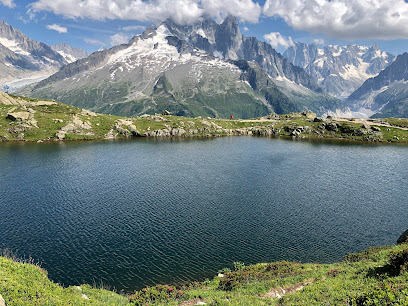
Statue of Balmat and Saussure
Explore the Statue of Balmat and Saussure in Chamonix: a magnificent tribute to alpine pioneers surrounded by stunning mountain vistas.
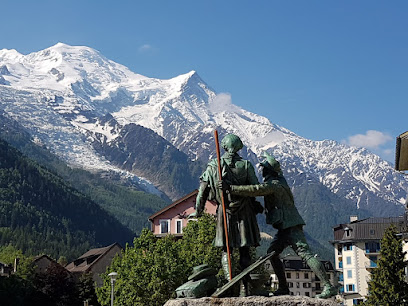
Av. Michel Croz
Explore Av. Michel Croz in Chamonix-Mont-Blanc for stunning alpine views, delightful shops, and a taste of local culture in the heart of the French Alps.
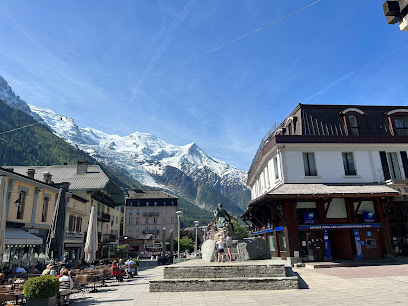
Point de vue sur L'Arveyron
Experience the breathtaking vistas of Mont Blanc at Point de vue sur L'Arveyron, a must-visit viewpoint in Chamonix-Mont-Blanc.
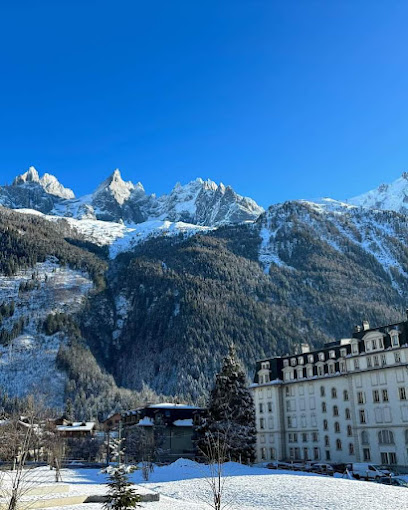
Unmissable attractions to see
QC Terme Pré Saint Didier
Discover the ultimate relaxation experience at QC Terme Prè Saint Didier, a luxurious spa nestled in the breathtaking Aosta Valley, Italy.
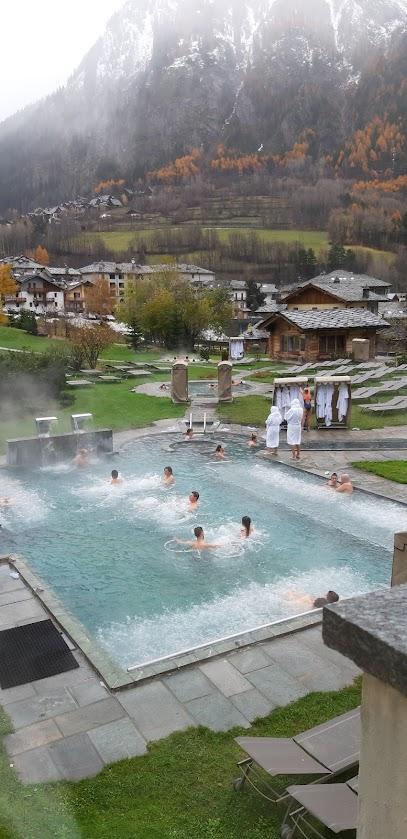
Parc de Merlet
Discover the stunning alpine beauty and wildlife at Parc de Merlet, an unforgettable experience in the French Alps with breathtaking views of Mont Blanc.
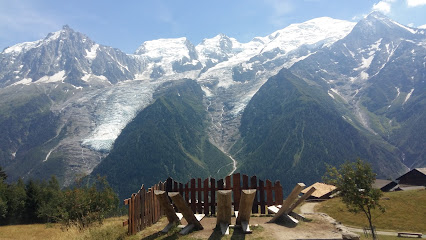
Office de Tourisme de Chamonix-Mont-Blanc
Discover the charm of Chamonix-Mont-Blanc at the Office de Tourisme, your essential guide to exploring this stunning alpine destination.
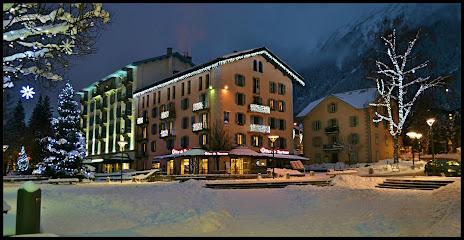
Criptoportico Forense
Discover the ancient beauty of Criptoportico Forense in Aosta, Italy, where history and stunning architecture await every traveler.
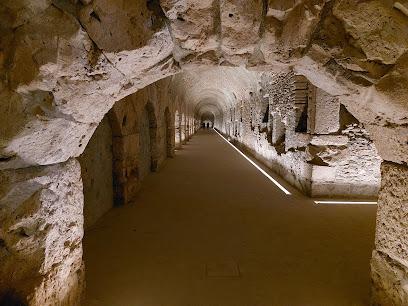
Lac de Thyez
Experience the natural beauty and recreational adventures at Lac de Thyez, a stunning lake surrounded by the majestic French Alps.
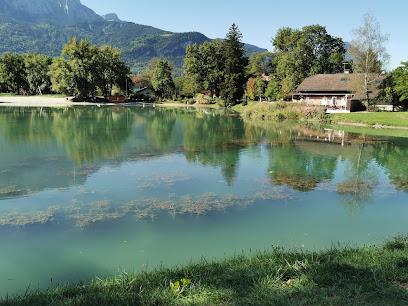
Lac Vert
Discover the enchanting beauty of Lac Vert in the French Alps, a serene lake surrounded by majestic mountains and lush greenery, perfect for outdoor adventures.
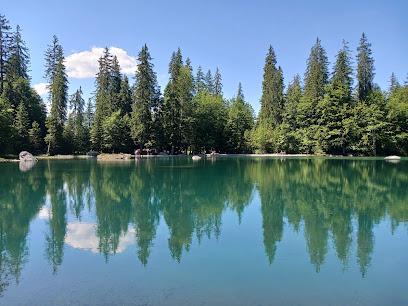
La Passerelle à Farinet
Discover breathtaking views and thrilling hiking trails at La Passerelle à Farinet, a must-visit tourist attraction in Saillon, Switzerland.
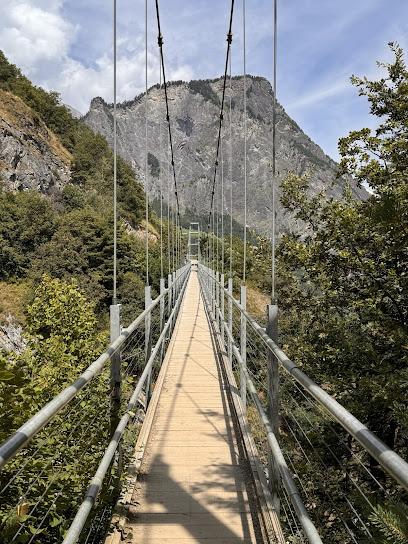
Courmayeur Mont Blanc Funivie S.p.A. - Cable Car Courmayeur
Experience breathtaking views and outdoor adventure at the Courmayeur Mont Blanc Cable Car in the stunning Aosta Valley, Italy, where the Alps meet your adventurous spirit.
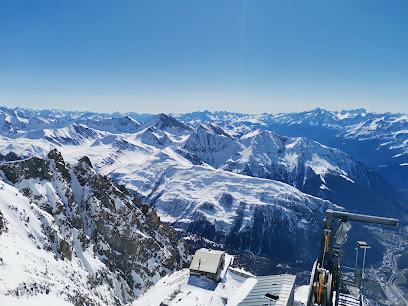
La jonction
Experience the breathtaking beauty of La Jonction, where glaciers converge in stunning landscapes, perfect for hiking and serene retreats.
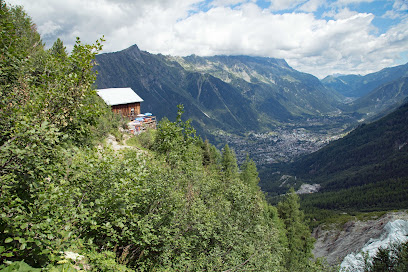
Le Massif Courmayeur
Experience the elegance of Le Massif Courmayeur, where luxury meets adventure in the stunning Aosta Valley, Italy.

Val Veny
Experience the breathtaking landscapes and thrilling outdoor adventures in Val Veny, the jewel of Aosta Valley in the Italian Alps.
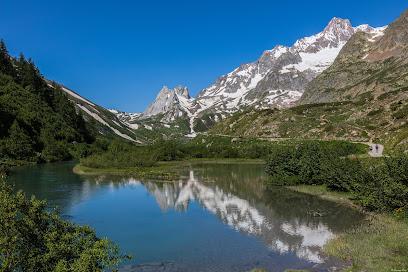
Les Grands Montets
Experience the breathtaking beauty and thrilling adventures at Les Grands Montets, a premier ski resort and scenic spot in Chamonix.
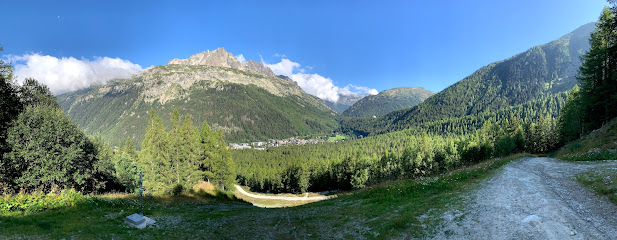
Argentière Glacier view point
Experience the stunning Argentiere Glacier View Point in Chamonix-Mont-Blanc, where breathtaking alpine scenery meets tranquility in nature's embrace.
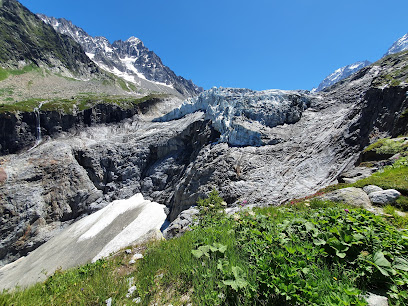
Eglise Saint Gervais et Saint Protais
Discover the serene beauty and rich history of Eglise Saint Gervais et Saint Protais, a stunning Catholic church in Saint-Gervais-les-Bains.
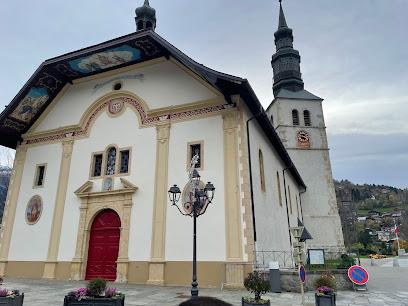
Hotel Aigle
Experience exquisite Italian cuisine and comfortable lodging at Hotel Aigle, your gateway to the stunning Aosta Valley and breathtaking Mont Blanc views.
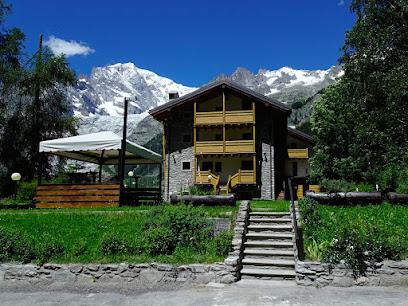
Essential places to dine
Josephine Restaurant
Experience authentic French cuisine with a twist at Josephine Restaurant in Chamonix - where every meal is a celebration of flavor.
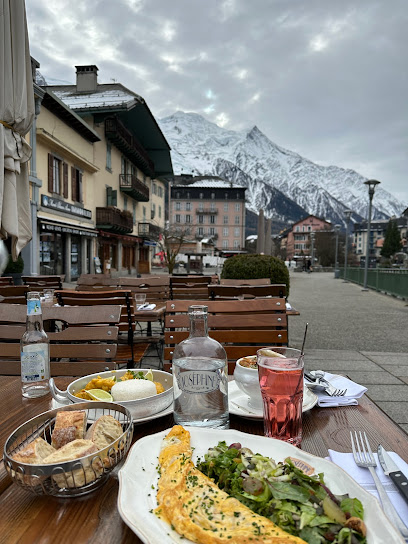
La Calèche
Experience authentic French cuisine in the heart of Chamonix-Mont-Blanc at La Calèche—where tradition meets taste.
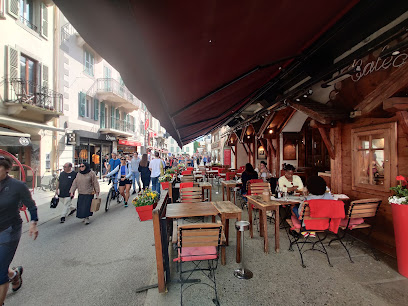
Le Monchu
Experience authentic Alpine dining at Le Monchu in Chamonix—home to exquisite fondue and raclette amid stunning mountain vistas.
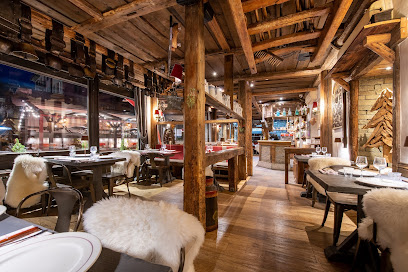
Restaurant Le Cap-Horn
Experience exquisite seafood dining at Restaurant Le Cap-Horn in Chamonix-Mont-Blanc, where culinary artistry meets breathtaking mountain views.
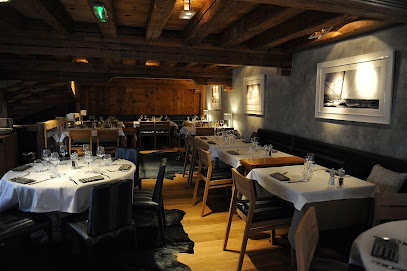
Annapurna
Discover authentic Indian cuisine at Annapurna in Chamonix—where tradition meets taste amidst breathtaking Alpine views.
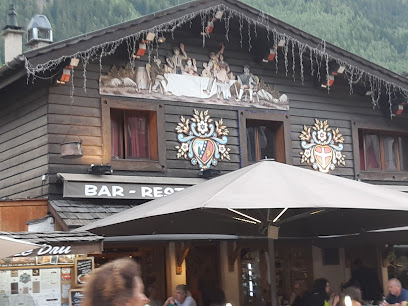
La Tablée
Experience authentic French cuisine at La Tablée in Chamonix-Mont-Blanc - where tradition meets stunning alpine views.
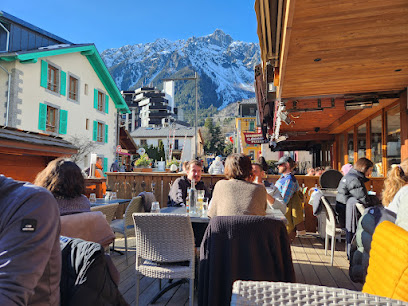
JOIA by Pizzeria Des Moulins
Experience authentic Italian cuisine at JOIA by Pizzeria Des Moulins - where every pizza tells a story amid stunning Alpine views.
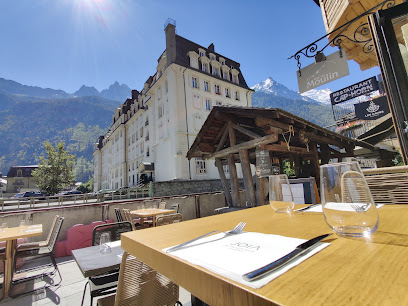
Bighorn Bistro
Experience the perfect blend of American flavors and local delicacies at Bighorn Bistro in Chamonix-Mont-Blanc.
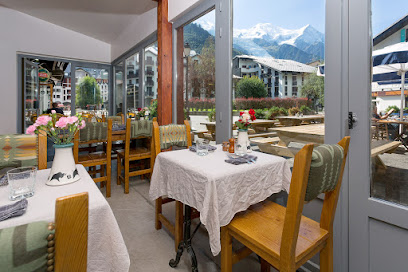
Le Comptoir des Alpes
Experience exceptional Italian and French cuisine at Le Comptoir des Alpes in Chamonix-Mont-Blanc - where culinary artistry meets breathtaking alpine views.
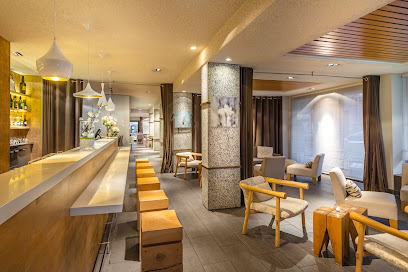
Restaurant La Moraine
Discover authentic French cuisine in Chamonix-Mont-Blanc at Restaurant La Moraine, where every dish tells a story.
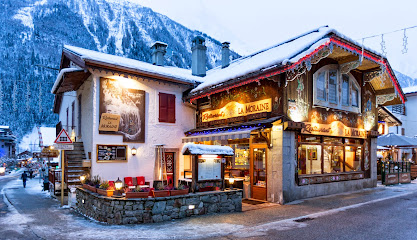
La Cabane Des Praz
Experience exquisite French cuisine at La Cabane Des Praz in Chamonix-Mont-Blanc, where local flavors meet stunning mountain views.
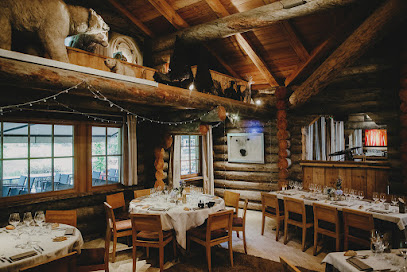
Rose Du Pont
Discover culinary excellence at Rose Du Pont in Chamonix - where traditional flavors meet locally brewed delights amidst stunning alpine scenery.
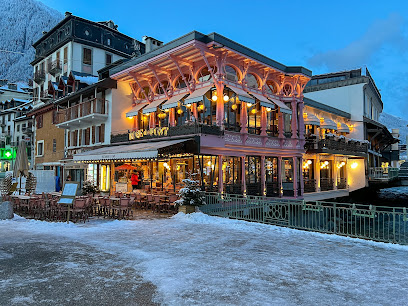
Atmosphère
Experience exquisite French cuisine at Atmosphère in Chamonix-Mont-Blanc, where every meal is a celebration of flavor amidst breathtaking mountain views.
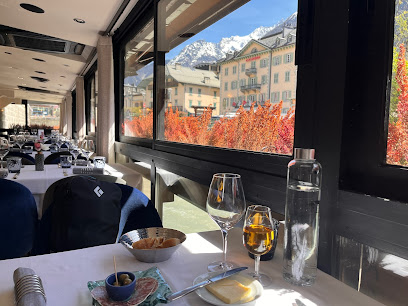
Chez Constant
Discover authentic French bistro cuisine at Chez Constant in Chamonix - where every dish is crafted with passion amidst breathtaking alpine views.
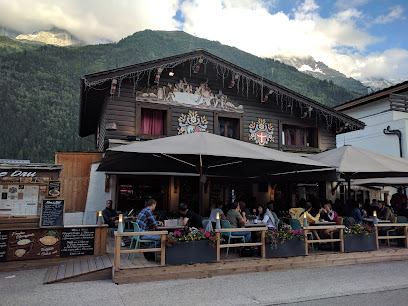
La Télécabine
Experience authentic French cuisine with breathtaking alpine views at La Télécabine in Chamonix-Mont-Blanc.
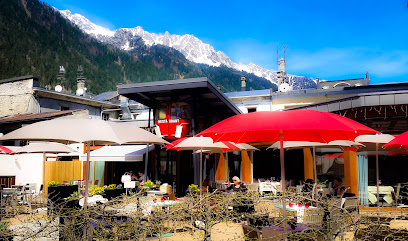
Markets, malls and hidden boutiques
Magasin Cocktail Scandinave Chamonix
Explore Magasin Cocktail Scandinave in Chamonix for exquisite Scandinavian furniture that beautifully complements the Alpine lifestyle.
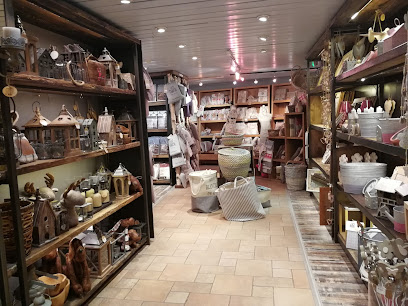
After Ski Chamonix
Explore vintage treasures and unique ski gear at After Ski Chamonix, a second-hand shop perfect for tourists seeking memorable finds.
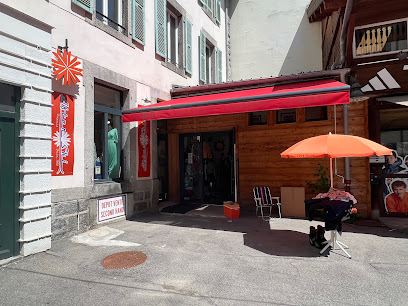
High Society CBD Chamonix Mont-Blanc
Explore High Society CBD in Chamonix Mont-Blanc for premium cannabis products amidst the breathtaking beauty of the French Alps.
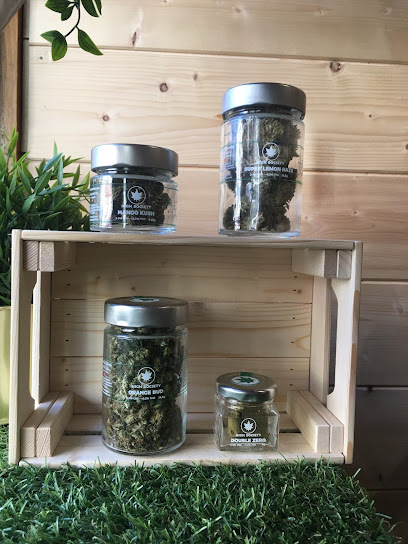
Salomon Store Chamonix - Ski Rental
Experience the ultimate winter sports adventure at Salomon Store Chamonix, where expert gear meets stunning alpine beauty.
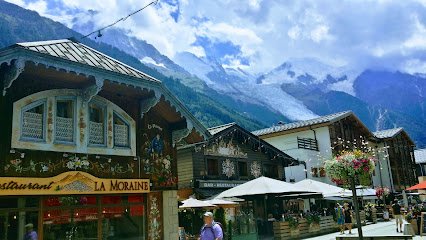
Pollen Market CBD Shop Chamonix Mont Blanc
Discover the charm of Pollen Market CBD Shop in Chamonix Mont Blanc, where quality meets education in a stunning alpine setting.
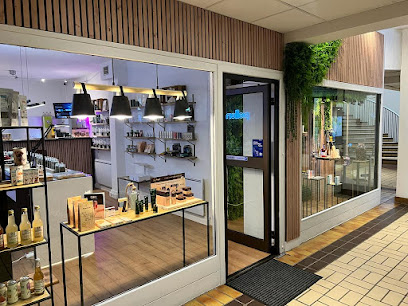
Snowleader Chamonix
Discover top-quality sporting goods in Chamonix, the gateway to the Alps, at Snowleader – your one-stop shop for outdoor adventures.
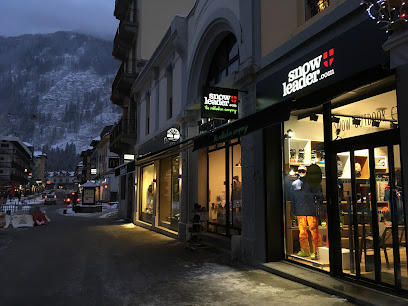
Patagonia Chamonix
Discover Patagonia Chamonix: Your ultimate destination for outdoor gear in the heart of the French Alps, ready for skiing, hiking, and climbing adventures.
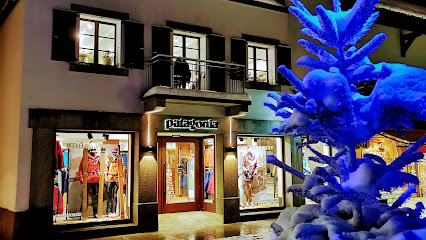
Odlo Store Chamonix
Discover top-notch outdoor sports gear at Odlo Store Chamonix, your ultimate destination for alpine adventures in the stunning French Alps.
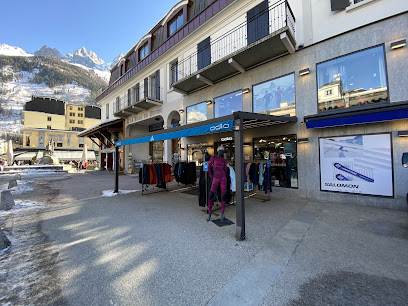
La Trace
Explore La Trace, Chamonix's charming souvenir store offering unique gifts that capture the spirit of the Alps, perfect for every traveler.

Concept Pro Shop Chamonix
Discover premier ski rentals and expert advice at Concept Pro Shop Chamonix, your gateway to an unforgettable alpine adventure.
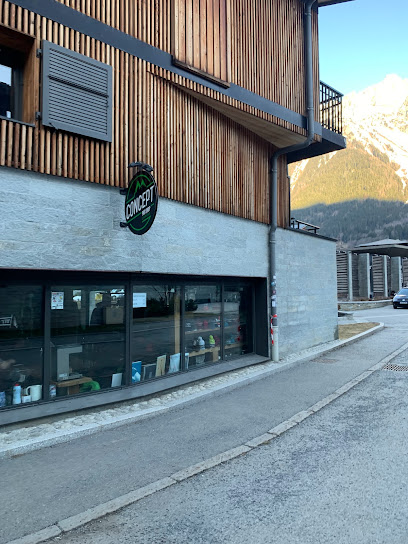
Mammut Store Chamonix
Discover the Mammut Store Chamonix for premium outdoor gear and apparel, perfect for your alpine adventures in the breathtaking Mont Blanc region.
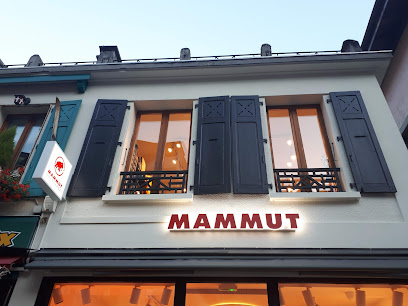
Volcom Store Chamonix
Explore the ultimate destination for stylish outdoor apparel at Volcom Store Chamonix, where fashion meets adventure in the heart of the Alps.
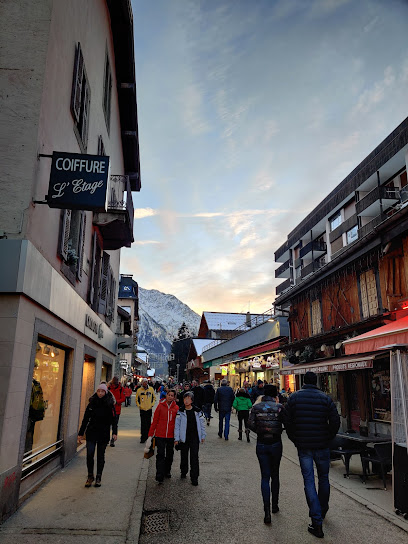
Magasin Rossignol Chamonix
Explore Magasin Rossignol Chamonix for top-notch sportswear, ski gear, and outdoor apparel in the heart of the Alps, perfect for every adventure.
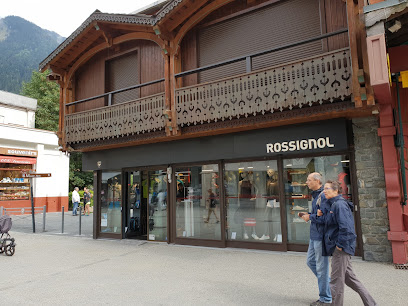
Columbia Sportswear Chamonix
Discover top-quality outdoor apparel and gear at Columbia Sportswear Chamonix, your gateway to alpine adventures and unforgettable experiences.
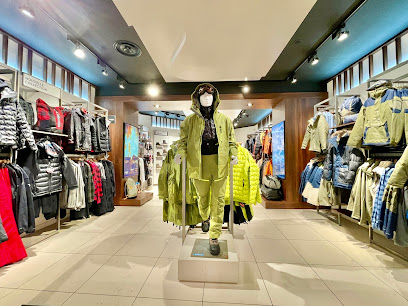
Millet Chamonix
Discover high-quality outdoor gear and expert advice at Millet Chamonix, your essential stop for alpine adventures in the French Alps.
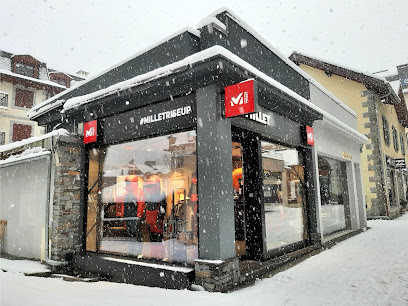
Essential bars & hidden hideouts
L'Hydromel
Discover L'Hydromel: A cozy bar and restaurant in Chamonix offering local delicacies and a warm atmosphere for tourists.
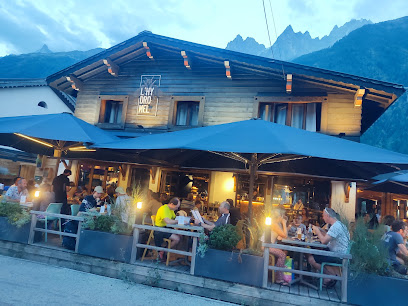
Bar'd Up
Experience the alpine charm at Bar'd Up, a cozy bar in Chamonix-Mont-Blanc, perfect for unwinding with friends and enjoying local beverages.

The Pub
Enjoy a vibrant atmosphere with live entertainment, delicious drinks, and a taste of local culture at The Pub in Chamonix.
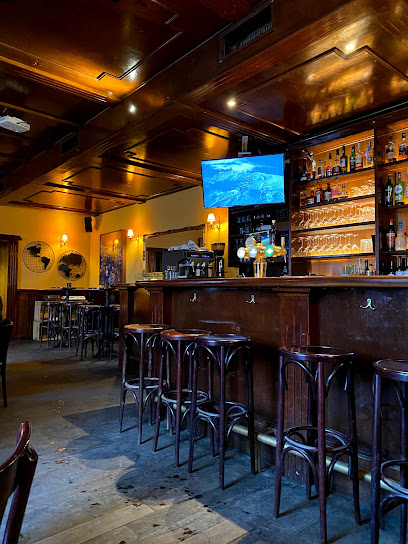
Beer O'Clock Chamonix
Discover Beer O'Clock Chamonix: A lively beer hall in the heart of the Alps, offering an extensive beer selection in a cozy atmosphere.
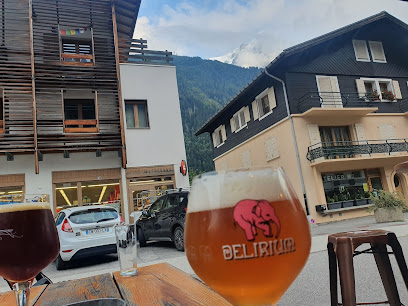
Le Privilège Chamonix
Discover Chamonix's vibrant nightlife at Le Privilège, a lively live music bar with fantastic drinks and unforgettable performances.
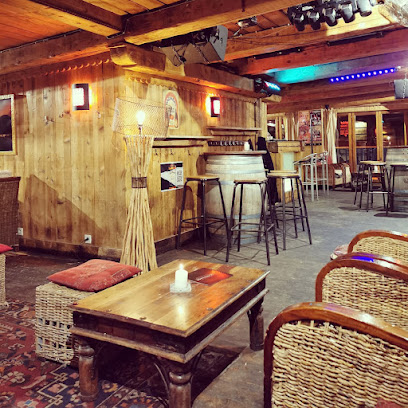
Les Caves Chamonix
Experience the vibrant nightlife at Les Caves Chamonix, a top bar in the stunning Chamonix-Mont-Blanc region, perfect for cocktails and live music.
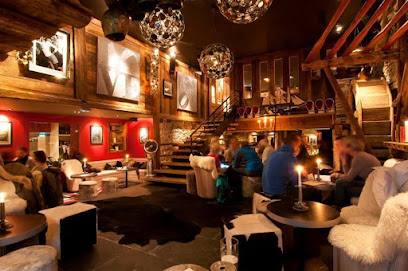
The Beckett & Wilde
Experience the warmth of an Irish pub with live music and sports in the heart of Chamonix-Mont-Blanc, ideal for tourists seeking relaxation.
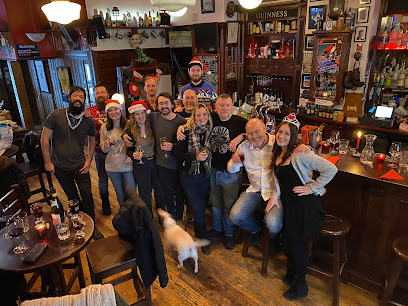
L’Alibi bar
Discover the vibrant nightlife of Chamonix at L’Alibi Bar, where expertly crafted cocktails and a lively atmosphere await you in the heart of the Alps.
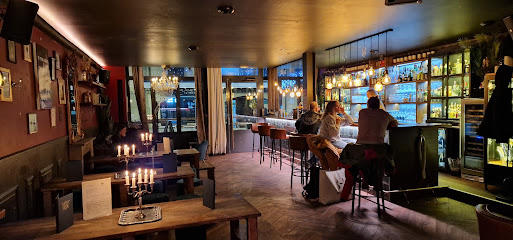
South Bar
Experience the charm of South Bar in Chamonix, where alpine beauty meets lively nightlife and delightful drinks.
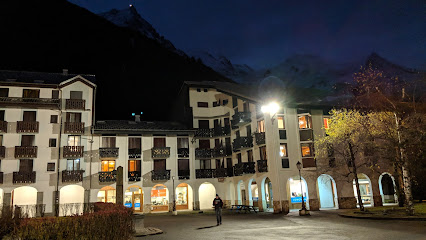
Barracuda Chamonix
Discover Barracuda Chamonix, the ultimate cocktail bar in the heart of the Alps, offering creative drinks and a vibrant atmosphere for all visitors.
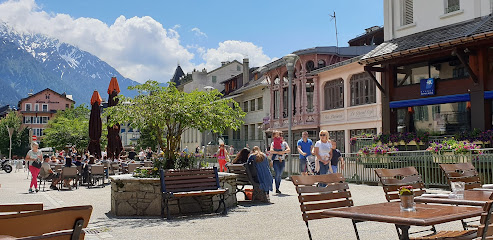
Bar Du Moulin Chamonix
Discover the vibrant nightlife at Bar Du Moulin in Chamonix – a perfect blend of cozy atmosphere, great drinks, and live entertainment amidst the Alps.
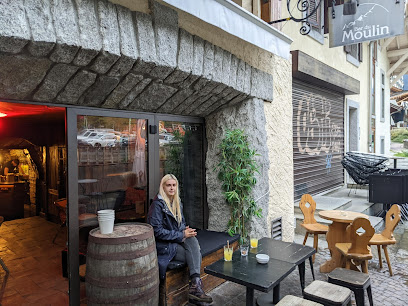
Le Bistrot des Cristalliers
Experience exquisite wines and a cozy atmosphere at Le Bistrot des Cristalliers, the perfect retreat in Chamonix-Mont-Blanc.
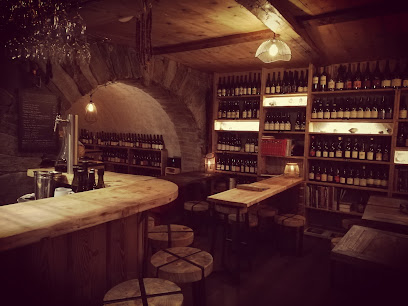
Le Cabanon Chamonix
Experience the cozy charm of Le Cabanon Chamonix, a fantastic bar in the heart of the Alps, perfect for après-ski relaxation and local flavors.
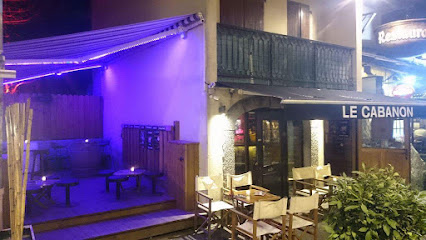
Epsylon - Chamonix
Experience the vibrant nightlife of Chamonix at Epsylon, where exquisite cocktails and delicious tapas come together in a lively atmosphere.
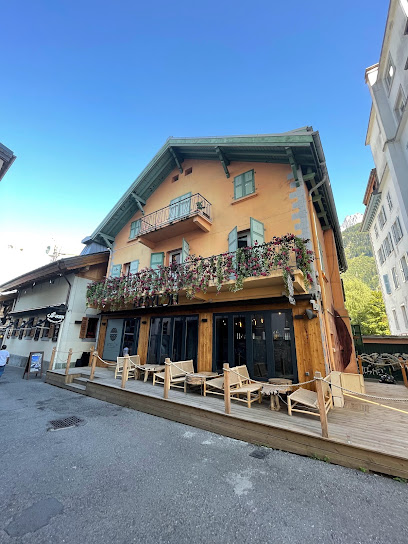
O'Byrne's
Experience the warmth and charm of O'Byrne's, a cozy pub in Chamonix-Mont-Blanc, perfect for relaxation and good company.
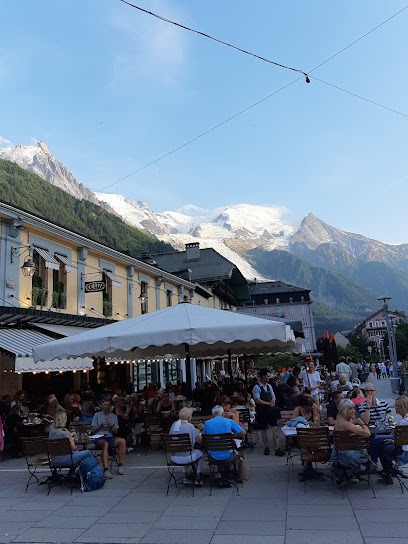
Local Phrases about Chamonix-Mont Blanc
-
- HelloBonjour
[bon-zhoor] - GoodbyeAu revoir
[oh-re-vwar] - YesOui
[wee] - NoNon
[nohn] - Please/You're welcomeS'il vous plaît
[seel voo pleh] - Thank youMerci
[mehr-see] - Excuse me/SorryExcusez-moi
[ex-kew-zay mwa] - How are you?Comment ça va?
[koh-mon sah vah] - Fine. And you?Bien. Et vous?
[byen. ay voo] - Do you speak English?Parlez-vous anglais?
[par-lay voo ahn-glay] - I don't understandJe ne comprends pas
[zhuh nuh kohm-prahnd pah]
- HelloBonjour
-
- I'd like to see the menu, pleaseJe voudrais voir la carte, s'il vous plaît
[zhuh voo-dray vwahr lah kart seel voo pleh] - I don't eat meatJe ne mange pas de viande
[zhuh nuh mahnj pah duh vee-and] - Cheers!Santé!
[san-tay] - I would like to pay, pleaseJe voudrais payer, s'il vous plaît
[zhuh voo-dray pay-ay seel voo pleh]
- I'd like to see the menu, pleaseJe voudrais voir la carte, s'il vous plaît
-
- Help!À l'aide!
[ah leed] - Go away!Allez-vous en!
[ah-lay vooz ahn] - Call the Police!Appelez la Police!
[ah-peh-lay lah poh-lees] - Call a doctor!Appelez un médecin!
[ah-peh-lay un may-sahn] - I'm lostJe suis perdu
[zhuh swee pair-doo] - I'm illJe suis malade
[zhuh swee mah-lahd]
- Help!À l'aide!
-
- I'd like to buy...Je voudrais acheter...
[zhuh voo-dray ash-tay] - I'm just lookingJe regarde juste
[zhuh ruh-gard zhust] - How much is it?Combien ça coûte?
[kohm-byan sah koot] - That's too expensiveC'est trop cher
[say troh shair] - Can you lower the price?Pouvez-vous baisser le prix?
[poo-vez voo bay-say luh pree]
- I'd like to buy...Je voudrais acheter...
-
- What time is it?Quelle heure est-il?
[kell ur ay-teel] - It's one o'clockIl est une heure
[eel ay oon ur] - Half past (10)Dix heures et demie
[dee zeur eh duh-mee] - MorningMatin
[mah-tan] - AfternoonAprès-midi
[ah-pray mee-dee] - EveningSoir
[swahr] - YesterdayHier
[ee-ehr] - TodayAujourd'hui
[ohzhoor-dwee] - TomorrowDemain
[duh-mahn] - 1Un
[uh] - 2Deux
[duh] - 3Trois
[twah] - 4Quatre
[kahtr] - 5Cinq
[sank] - 6Six
[sees] - 7Sept
[set] - 8Huit
[weet] - 9Neuf
[nuf] - 10Dix
[dee]
- What time is it?Quelle heure est-il?
-
- Where's a/the...?Où est...?
[oo ay] - What's the address?Quelle est l'adresse?
[kell ay lah-dress] - Can you show me (on the map)?Pouvez-vous me montrer (sur la carte)?
[poo-vez voo muh mohn-tray sur lah kart] - When's the next (bus)?Quand est le prochain (bus)?
[kahn ay luh proh-shahn bus] - A ticket (to ....)Un billet (pour ....)
[uhn bee-yay poor]
- Where's a/the...?Où est...?
History of Chamonix-Mont Blanc
-
Long before Chamonix became a hub for mountaineers and skiers, it was home to small communities of farmers and herders. Archaeological evidence suggests that the valley was inhabited as far back as the Bronze Age, with traces of early settlements found in the surrounding areas.
-
The official founding of Chamonix dates back to the 11th century when Benedictine monks established a priory in the valley. The establishment of the priory marked the beginning of organized community life, with the monks playing a significant role in the development of agriculture and local infrastructure.
-
The first recorded ascent of Mont Blanc, the highest peak in Western Europe, took place in 1786. Jacques Balmat and Dr. Michel-Gabriel Paccard achieved this historic feat, marking the birth of modern alpinism. Their climb drew international attention and established Chamonix as a premier destination for mountaineers.
-
The 19th century saw a surge in mountaineering activity, often referred to as the 'Golden Age of Alpinism.' Chamonix became the epicenter for climbers from all over Europe, with numerous first ascents of prominent peaks being recorded. The establishment of the Compagnie des Guides de Chamonix in 1821 further solidified its status as a mountaineering hub.
-
By the late 19th and early 20th centuries, Chamonix began to attract winter sports enthusiasts. The construction of the Montenvers Railway in 1908 made the Mer de Glace glacier accessible, boosting tourism. The 1924 Winter Olympics, held in Chamonix, cemented its reputation as a world-class destination for winter sports.
-
During World War II, Chamonix was occupied by German forces, and the region saw significant military activity. The post-war period brought about reconstruction and modernization, with new infrastructure and facilities being developed to accommodate the growing number of tourists.
-
Today, Chamonix-Mont Blanc is a renowned destination for outdoor enthusiasts year-round. The town has successfully blended its rich historical heritage with modern amenities, making it a vibrant and dynamic place. From hosting international sporting events to preserving its cultural landmarks, Chamonix continues to captivate visitors from around the world.
Chamonix-Mont Blanc Essentials
-
Chamonix-Mont Blanc is located in the Haute-Savoie region of France. The nearest major airport is Geneva International Airport (GVA) in Switzerland, approximately 88 kilometers away. From Geneva, you can take a shuttle bus, private transfer, or rent a car to reach Chamonix, which typically takes about 1.5 hours by road. Alternatively, you can take a train to Saint-Gervais-les-Bains-Le Fayet and then transfer to the Mont Blanc Express train that goes directly to Chamonix.
-
Chamonix-Mont Blanc offers various transportation options within the town and its surroundings. The local bus service, provided by Chamonix Bus, is efficient and connects different parts of the town as well as nearby villages. The Mont Blanc Express train is a scenic way to travel to neighboring areas. Taxis and car rental services are also available. For those who enjoy biking, several rental shops offer mountain and road bikes.
-
The official currency in France is the Euro (EUR). Credit cards are widely accepted in hotels, restaurants, and shops in Chamonix-Mont Blanc. However, it is advisable to carry some cash for smaller establishments and market purchases. ATMs are plentiful throughout the town, ensuring easy access to cash withdrawals.
-
Chamonix-Mont Blanc is generally a safe destination for tourists. Nonetheless, it's important to take standard safety precautions. Avoid isolated areas at night and always keep an eye on your belongings, especially in crowded places. Certain off-piste areas in the mountains can be dangerous due to avalanches or sudden weather changes, so always check local advisories before venturing out.
-
In case of emergency, dial 112 for immediate assistance. Chamonix has a local police station and medical facilities, including the Hôpital de Chamonix for medical emergencies. Pharmacies are available for minor health issues. It is recommended to have travel insurance that covers medical emergencies and mountain rescue services.
-
Fashion: Do wear practical and weather-appropriate clothing. Mountain weather can change quickly, so layers are advisable. Avoid overly casual clothing in fine dining restaurants. Religion: Do respect local religious customs, especially when visiting churches and monasteries. Public Transport: Do validate your ticket before boarding buses and trains. Don't be loud or disruptive on public transport. Greetings: Do greet people with a polite 'Bonjour' and a handshake. Eating & Drinking: Do try local specialties such as fondue and raclette. Don't forget to make a reservation for popular restaurants, especially during peak seasons.
-
To experience Chamonix-Mont Blanc like a local, visit the weekly market at Place du Mont Blanc for fresh produce and local crafts. Engage with locals in small cafés and bistros for a more authentic experience. For outdoor enthusiasts, taking a less-trodden trail can offer unique and serene views. Don’t miss the opportunity to ride the Aiguille du Midi cable car for breathtaking views of Mont Blanc.
Nearby Cities to Chamonix-Mont Blanc
-
Things To Do in Annecy
-
Things To Do in Vevey
-
Things To Do in Geneva
-
Things To Do in Lausanne
-
Things To Do in Zermatt
-
Things To Do in Murren
-
Things To Do in Thun
-
Things To Do in Interlaken
-
Things To Do in Turin
-
Things To Do in Grindelwald
-
Things To Do in Grenoble
-
Things To Do in Bern
-
Things To Do in Ascona
-
Things To Do in Locarno
-
Things To Do in Lyon










